Search Results
Fine Jewelry University Articles matching: “bracelet diamond and ruby”
Showing only FJU Article results. Click here to show all results.
Fine Jewelry University (Show All FJU Articles)
-
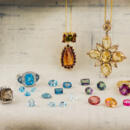
Gem in the Spotlight: Topaz
…ht. History and Lore Topaz in its pure form is naturally colorless, clear like a diamond. The famous “Braganza Diamond” was thought to be the largest diamond ever found (prior to the Cullinan Diamond) at 1,680 carats and was set in the Portu… to put coatings on lenses for glasses and cameras. It is also one of the processes that is used to create lab grown diamonds . A thin, multi-colored film is bonded on the surface of colorless topaz to create all the colors you see in Mystic…
-
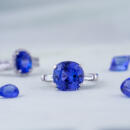
Gem in the Spotlight: Tanzanite
…sharp impacts. Setting it in earrings or a pendant will help protect it if the intended use is daily wear. Rings and bracelets set with tanzanite should only be worn carefully on occasion. We recommend cleaning with warm soapy water and a … traits in a gemstone. Tanzanite has them both. In fact, it is estimated that Tanzanite is 1,000 times rarer than diamond. But, what makes Tanzanite so popular is its color. Tanzanite’s gorgeous color is a captivating mix of blue and purple…
-
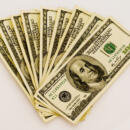
How to Sell Your Jewelry
…condition. Some gems have a higher value then others. A natural ruby is worth many times more then a synthetic ruby. Diamonds are generally more valuable then amethysts. Knowing your gem’s grade and rarity will help with understanding its … out right for an immediate transaction. Jewelry brokers are usually found in major cities and include a jewelry and diamond finding service. Pawn shops and secondhand dealers are another type of walk-in and sell option. Most work on a cash …
-
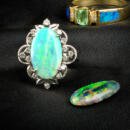
Gem in the Spotlight: Opal
… commonly used in jewelry. For reference, here are the Mohs hardness values for some other gemstones you may know: Diamond 10, Sapphire 9, Amethyst 7, and Peridot 6. Turquoise is about as hard as opal, but you would need to consider Pearl or… in the first century AD, eloquently described opal like this: “For in them you shall see the living fire of the ruby, the glorious purple of the amethyst, the sea green of the emerald, all glittering together in an incredible mixture of …
-
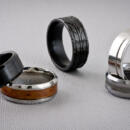
Alternative Metals for Men’s Jewelry
… are some potential cons to wearing a titanium ring that you should consider. Titanium rings can be cut off with a diamond-tip ring cutter, but because of their very high strength, Titanium rings are much more difficult to cut off than other…. Tungsten is rated at about a 9 on the Mohs scale of hardness which is the same as Ruby or Sapphire and just below diamond (which is 10). Like these gems, tungsten is very scratch resistant and will not bend out of shape, but it will break …
-
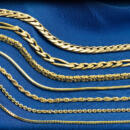
Types of Necklace Chains
…, what kind of chain is best for you? In this article we’ll introduce you to the staggering variety of necklace (and bracelet) chains that are available right now in the jewelry world. Each one has its own unique style, strengths, and … to support the weight of a pendant during daily wear and tear. Larger link cable chains make a good base for charm bracelets. PROS Wearability – The simple design of cable chains makes them very flexible and nearly impossible to kink. …
-
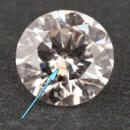
What Are Lab Grown Diamonds?
In the simplest terms, lab grown diamonds are diamonds that have been made by people instead of mined out of the earth. If it’s so simple, you might wonder …this sentence. The complexity arises from the fact that lots of different terms have been used to describe lab grown diamonds and their cousins, and not everyone uses these terms in the same way. So, let’s begin with some vocabulary. … mean man-made, copied, unreal, or even imitation. But, in this context, what do we mean when we say “synthetic diamond”? In the gemological world, synthetic is a highly technical term. When speaking technically, synthetic gems are man-made …
-

How Are Lab Grown Diamonds Made?
The dream of making a beautiful and valuable diamond from simple carbon has long captivated the imagination of scientists and visionaries alike. Just like the alchemists…, many have tried to achieve this impressive feat. We have only recently been able to produce gem quality, lab grown diamonds that are large enough to be used in jewelry. But, how is it done? Early Efforts Throughout history, many people …. Henri Moissan was one of the early pioneers in the field. In 1893, he claimed to have successfully made a diamond by heating charcoal to 3,500 degrees Celsius inside a carbon crucible. Many attempts were made to reproduce his techniques …
-
Caring for and Cleaning Your Jewelry
How to Clean Jewelry A diamond‘s spectacular beauty is due to its light show. Diamonds make light reflect, show its many colors, and dazzle. To … and lotions add a coating that stops the light show. Dust and dirt stick to the grease and oils creating a lifeless diamond. Cleaning your diamond jewelry at home is simple and rewarding. Use a soft toothbrush and mild soap then rinse … key to diamond cleaning is the underneath side or pavilion. The light needs a clean surface to bounce upward. The diamond may need to be scrubbed several times before all the build up is removed. Some don’ts of jewelry cleaning. Never use …